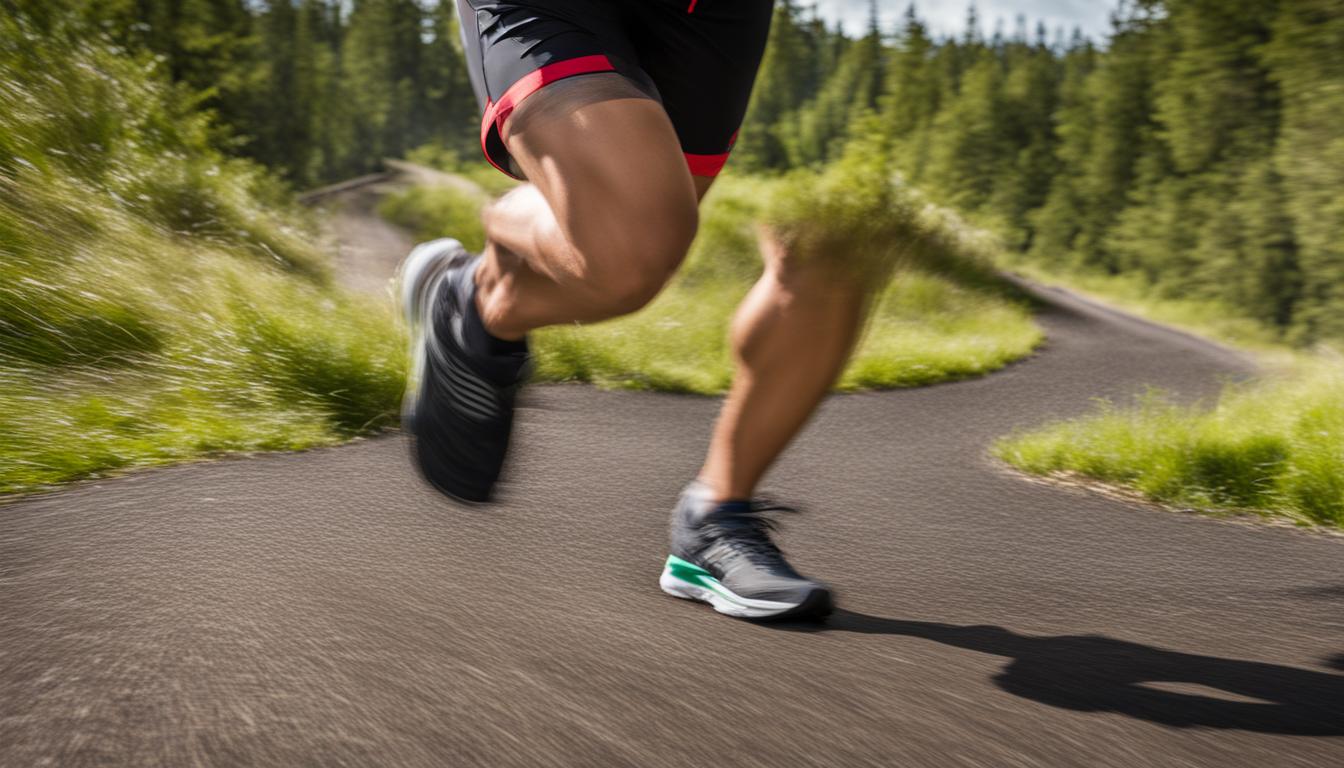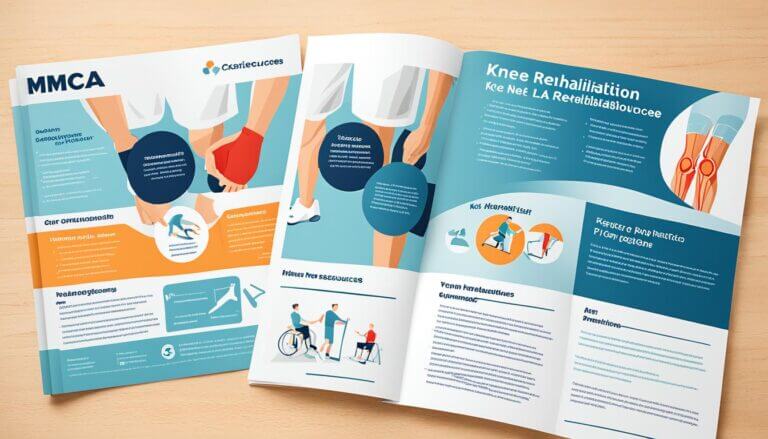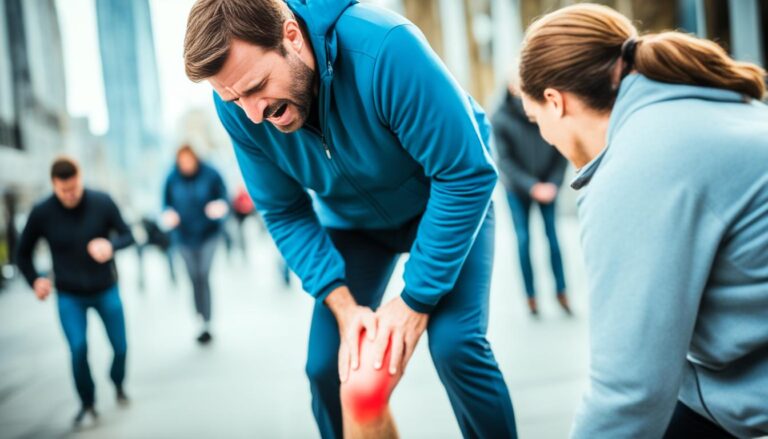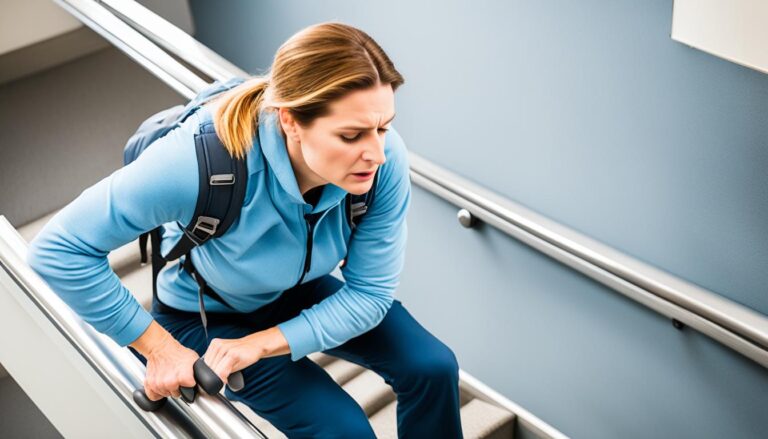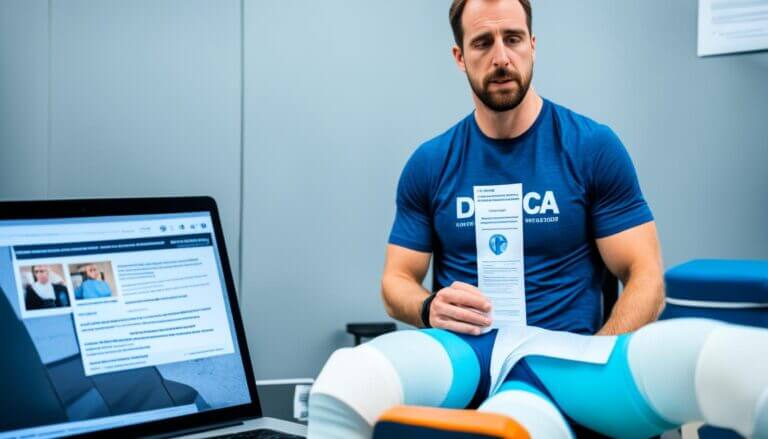Prevent Common Knee Injuries When Running
Did you know that knee injuries are one of the most common ailments among runners? Whether you’re a seasoned marathoner or just starting your couch to 5K journey, the impact on your knees while running can lead to pain and injuries. It’s estimated that up to 42% of running injuries involve the knee, making it a significant concern for athletes and fitness enthusiasts alike.
From runner’s knee to patellar tendinitis, there are various conditions that can cause knee pain while running. The good news is that with the right preventive measures, you can significantly reduce your risk of these injuries and enjoy pain-free runs.
In this article, we’ll explore the causes of knee pain when running and provide you with practical tips to prevent common knee injuries. Whether you’re a casual jogger or a dedicated marathoner, these strategies will help you keep your knees healthy and strong so that you can continue running with confidence.
Causes of Knee Pain When Running
Knee pain when running can have several potential causes. It is important to understand these causes in order to effectively prevent knee injuries and pain while running.
Knee Bursitis
Knee bursitis is a common cause of knee pain in runners. It occurs when the small sacs in the front of the kneecap become inflamed. This inflammation can result from repetitive running and overuse of the knee joint.
Patellar Tendinitis
Patellar tendinitis is an injury to the tendon that connects the patella (kneecap) to the shinbone. This condition typically occurs due to repetitive stress on the knee, such as repetitive running or jumping.
Iliotibial Band Syndrome
Iliotibial band syndrome is another common running-related knee injury. It involves swelling and irritation of the tendon on the outside of the leg. This condition often occurs due to overuse and improper form while running.
Torn Meniscus
A torn meniscus is a damage to the cartilage between the shinbone and thighbone. It can be caused by a sudden twisting or bending motion, which commonly occurs in sports activities like running. Aging and degenerative changes in the knee can also contribute to a torn meniscus.
Muscle Weakness
Muscle weakness in the quadriceps and hamstrings can lead to imbalances in the knee joint, resulting in knee pain. Strengthening these muscles through targeted exercises can help prevent running-related knee injuries.
Osteoarthritis
Osteoarthritis, a degenerative joint disease, can also cause knee pain while running. This condition occurs when the protective cartilage in the joints gradually wears down over time. Repetitive running and high-impact activities can exacerbate osteoarthritis symptoms.
To prevent knee pain when running, it is important to address these potential causes and take proactive measures to protect the knees. This includes proper warm-up and cool-down exercises, wearing appropriate footwear, strengthening the relevant muscles, and incorporating other forms of cardio to reduce repetitive strain on the knees.
| Cause | Description |
|---|---|
| Knee Bursitis | Inflammation of the small sacs in the front of the kneecap |
| Patellar Tendinitis | Injury to the tendon that connects the patella to the shinbone |
| Iliotibial Band Syndrome | Swelling and irritation of the tendon on the outside of the leg |
| Torn Meniscus | Damage to the cartilage between the shinbone and thighbone |
| Muscle Weakness | Weakness in the quadriceps and hamstrings |
| Osteoarthritis | Degenerative joint disease that affects the knee |
Tips for Preventing Knee Pain When Running
When it comes to running, preventing knee pain is essential for an enjoyable and injury-free experience. Here are some tips to keep in mind to protect your knees:
1. Hydrate: Staying properly hydrated is crucial for maintaining joint health. Be sure to drink plenty of water before, during, and after your runs to keep your knees lubricated and functioning optimally.
2. Stretch: Before and after your runs, take the time to stretch your muscles. Dynamic stretches, such as leg swings and high knees, help warm up the muscles, while static stretches, like quad and hamstring stretches, target specific muscle groups.
3. Strengthen: Building strength in your legs and core can provide stability and support for your knees. Incorporate exercises like squats, lunges, and planks into your routine to help prevent knee injuries.
4. Pace Yourself: Gradually increase your mileage and intensity to avoid overloading your knee joints. Pushing too hard, too soon can lead to strain and injury. Listen to your body and give yourself time to adapt.
5. Choose the Right Shoes: Wearing proper running shoes that provide appropriate support is essential. Invest in a pair of shoes that are designed for your specific foot type and replace them regularly to ensure optimal cushioning and stability.
Remember, if you experience persistent or worsening knee pain while running, it’s important to consult a healthcare provider for further evaluation and treatment options. Taking care of your knees is crucial for long-term injury prevention and enjoying the sport you love!
FAQ
What is runner’s knee and how is it caused?
Runner’s knee, also known as patellofemoral pain syndrome, is characterized by pain in the front of the knee. It is often caused by weakness in the core and hips, which leads to improper alignment of the kneecap during running.
What are some common causes of knee pain when running?
Some common causes of knee pain when running include knee bursitis, patellar tendinitis, iliotibial band syndrome, torn meniscus, muscle weakness in the quads and hamstrings, and osteoarthritis.
How can I prevent knee pain when running?
To prevent knee pain when running, it’s important to stay hydrated, stretch before and after running, engage in strengthening exercises for the legs and core, pace yourself and gradually increase mileage, choose the right running shoes, and seek medical attention if knee pain persists or worsens.
What can I do to prevent common knee injuries while jogging?
To prevent common knee injuries while jogging, it’s recommended to stretch the muscles around your knees, strengthen your leg muscles and core, use cold therapy on sore knees, mix in other forms of cardio to give your knees a break, and stay well-hydrated.

